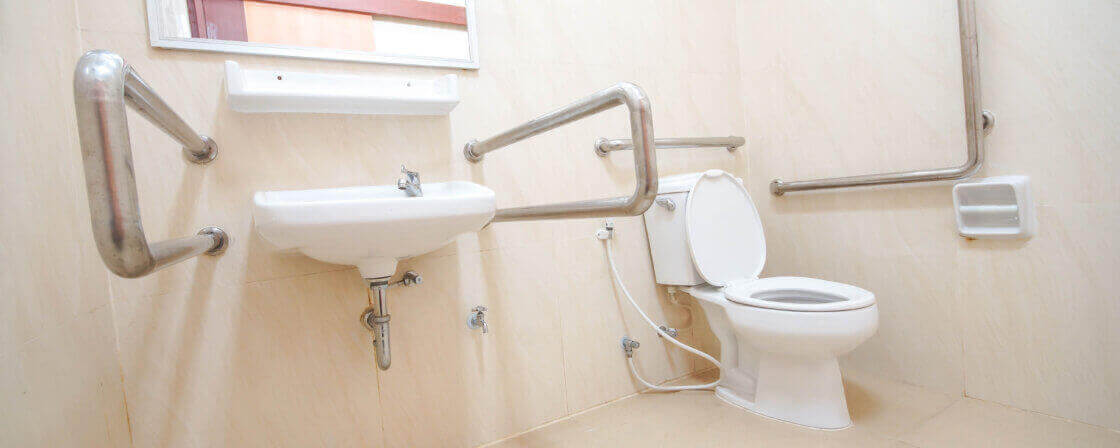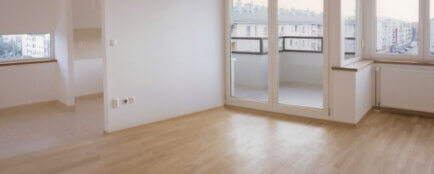What is a barrier-free apartment
An accessible apartment is a dwelling unit that is specially designed to accommodate people with disabilities or reduced mobility. These dwellings are built or modified with equipment that makes them more accessible and usable for people with various physical limitations. Their aim is to provide a living space thatenables residents with disabilities to live independently and comfortably.
Accessible apartments usually have these facilities:
- Wider doors: Doors in accessible apartments are usually wider to accommodate wheelchairs and other compensatory aids (such as walkers).
- Wheelchair accessible entrances.
- Accessible Bathrooms: Bathrooms are designed with features such as thresholdless showers, grab bars in the shower and at the toilet, and raised toilets.
- Low-lying work surfaces: kitchen units and sinks tend to be positioned lower than usual to ensure comfortable access for wheelchair users.
- Accessible cabinets: Cabinets and storage areas may have pull-out shelves or adjustable height for ease of use.
- Wide corridors: corridors are usually wider to allow easy manoeuvrability, especially for wheelchair users.
- Low-lying switches: Light switches and electrical outlets are installed at a lower height to make them more accessible.
- Visual and audible signals: These dwellings may have visual or auditory alarms and notification systems for people with hearing or visual impairments.
- Emergency call systems: Some accessible apartments may include emergency call systems, or SOS buttons, that simply allow residents to request assistance in an emergency.
Tip for article
Tip: What exactly an apartment must meet to be considered barrier-free is determined by the so-called barrier-free decree.
For whom is the barrier-free apartment intended
Accessible apartments are primarily intended for people with disabilities or people with reduced mobility. They are designed to provide these people with a living environment that is accessible and comfortable. These are the main types of people for whom accessible housing is intended:
- People with disabilities: accessible dwellings are designed to make it easier for people who use wheelchairs, walkers, crutches or other mobility aids to move around and carry out everyday activities in the living space.
- Seniors: For many people, mobility deteriorates as they age. Therefore, accessible apartments are also designed for seniors who may have difficulty climbing stairs, getting up from the toilet, etc.
- People with visual impairments: barrier-free flats can have equipment such as tactile elements, audible alarms and Braille to help people with visual impairments to find their way around and use their living space.
- People with hearing impairments: Some accessible housing may include visual or vibrating alarms and other alert systems for people with hearing impairments.
- People with cognitive disabilities: Although the primary focus of accessible housing is on physical accessibility, some housing may also include design features that are useful for people with cognitive impairments such as autism.
- Family members or caregivers: Accessible apartments can also benefit family members or caregivers of persons with disabilities. This is because they provide a more accessible environment in which it is easier to work with the disabled person.
Who is entitled to a barrier-free apartment
The city offers barrier-free apartments to its citizens if certain conditions are met. These conditions may vary, but usually include the condition that the person must have a disability (e.g. limited mobility or hearing or visual impairment), be a citizen of the Czech Republic, not own a flat (and if they do, they must provide evidence of why the flat cannot be used – e.g. it is on the 5th floor without a lift).
However, there are few barrier-free flats offered by the city and many applicants. Fortunately , however, it is possible to find wheelchair-accessible flats in the context of classic rentals from private landlords. With these, the rent will cost more than with city apartments, but again, the supply is much greater.
Tip for article
Tip: The supply and demand of barrier-free flats in Prague is the focus of the Asistence o.p.s. service.
How your home improvement allowance works
The home adaptations allowance falls under the category of special assistance allowances. As well as disabled adaptations, this includes, for example, allowances for motor vehicles, guide dogs or electronic communication aids for the deafblind. The exact wording of the conditions is regulated by the Decree on the provision of benefits to persons with disabilities.
For whom the allowance is intended
You are entitled to this allowance if you fall into one of the following categories:
- You have a severe defect in your nasal or musculoskeletal system that severely limits your mobility.
- You have an impairment of an intrinsic nature that severely limits your mobility.
- You have a severe visual impairment.
- You have a severe hearing impairment.
- You have severe dementia that prevents you from walking with reliance on a mechanical wheelchair or dementia that is accompanied by frailty and immobility syndrome.
Another condition is that the disability must be of a long-term nature with a minimum duration of 1 year. At the same time, the allowance is only granted to persons over three years of age.
What the allowance covers
Allowances for adaptations and equipment for a wheelchair-accessible apartment are regulated by the Decree on the Provision of Benefits to Persons with Disabilities. See Annex 1 for a summary list of all the aids for which you can claim the allowance (however, this is not limited to these aids, but it is also possible to get an allowance for other aids of a similar nature). The main disability aids include, but are not limited to:
- Building work associated with bathroom and toilet adaptations – this is building work and the materials necessarily associated with the adaptations (not tiles, floor coverings, sanitary ware etc.),
- access rails, portable ramp, stairlift, stair platform (including installation) and ceiling lifting system (including installation),
- construction work related to the extension of the door in the apartment,
- staircase seat, including installation,
- electronic orientation aids for the blind and deafblind,
- household measuring instruments with voice or tactile output,
- doorbell or doorbell signaling, including installation.
Are you solving a similar problem?
Solutions Tailored for You
Our team of experienced attorneys will help you solve any legal issue. Within 24 hours we’ll evaluate your situation and suggest a step-by-step solution, including all costs. The price for this proposal is only CZK 690, and this is refunded to you when you order service from us.
I Need help
- When you order, you know what you will get and how much it will cost.
- We handle everything online or in person at one of our 6 offices.
- We handle 8 out of 10 requests within 2 working days.
- We have specialists for every field of law.
What is the amount of the allowance
The allowance for aids costing less than CZK 10 000 is only granted to a person with an income below eight times the minimum subsistence level. An exception to this is if a person with an income of more than eight times the minimum subsistence level repeatedly applies for an aid allowance of up to CZK 10 000. The co-payment is always CZK 1 000.
If the cost of the aid exceeds 10 000, the applicant’s co-payment is 10 % of the cost. If the person lacks the financial means, it is possible to reduce the co-payment, but never below CZK 1 000.
The maximum contribution limit is then set at CZK 350 000 and CZK 500 000 in the case of a contribution towards the purchase of a platform. The total of contributions is also limited, so that the sum of contributions over 60 calendar months may not exceed CZK 800 000 or CZK 850 000 if the contribution for the purchase of a platform is included.
Tip for article
Wondering how to buy a mortgage-financed home? Then you must not miss our next article, in which you will learn the conditions for obtaining a mortgage.
How and where to apply for an accessible flat allowance
The application is submitted to the Ministry of Labour and Social Affairs. To apply, you will need to submit:
- Identity card or birth certificate for children under 15,
- proof of quarterly income (only if you have an income),
- proof of self-employment,
- proof of temporary incapacity for work (if this applies to you),
- proof of maintenance (for a dependent child who has been ordered by a court to pay maintenance),
- the property owner’s agreement to make the modifications and at least 2 proposed solutions to remove the barrier, including the cost (if you are requesting a ceiling lift, vertical lift, inclined lift, or stair chair).
If you are claiming the Special Needs Allowance for a dependent child who has left school, you will need:
- Confirmation of education, or
- a decision to interrupt your studies due to pregnancy, childbirth or parenthood, or
- a certificate of the dependent child’s health status, or
- a certificate of the dependent child’s inability to train for a future occupation or gainful activity, or
- inclusion in the register of jobseekers.
Accessible housing is not only a matter of comfort, but also a matter of dignity and independence for many people with disabilities. It is a place where they can live a full life and carry out normal daily activities without unnecessary barriers. So don’t be afraid to apply for an allowance to help you get a home that meets your needs. Your comfort and quality of life are worth it.




